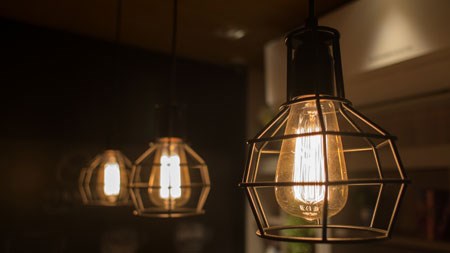It may seem like a secondary concern while basking in the happiness of finding your dream home but establishing what constitutes a fixture or fitting is an important part of the purchase process, which shouldn’t be overlooked.
There may be items that a seller has installed and would like to remove from the property when he moves – chandeliers, for instance. However, given the seemingly permanent nature of the item, the buyer may assume that it forms part of the property.
The general rule when it comes to fixtures and fittings is that when the purchaser buys a property they receive the land, the permanent physical improvements such as any buildings erected along with all items that are permanently attached to the improvements or buildings erected.
Three key questions
Of course just how permanent an item is can sometimes be a matter of opinion and can give rise to dispute. Adrian Goslett, CEO of RE/MAX South Africa recommends asking three key questions to determine what constitutes a permanent fixture or fitting:
What is the nature and purpose for which the item was attached? The item must be attached to the land or the structure erected on the land. It should be of a permanent nature or intended to always serve the land
+
How and to which degree was the item attached? It should be sufficiently attached so as to become part of the land or structure. If removing the item will cause significant damage to the structure it should be considered permanent
What was the intention of the owner when attaching the item? If the intention was to permanently attach the item, then that should be taken into consideration
He adds that generally if the item is bolted down, cemented, sown or planted and has taken root, it can be considered permanent. Items which generally fall into this bracket include, amongst others, doors and their keys, windows, built-in cupboards and bookshelves, wall-to-wall carpets, bar/kitchen counters, shrubs and plants, built-in stoves and fixed light fittings.
Items which could be misconstrued as permanent include, amongst others, freestanding wardrobes, moveable kitchen preparation islands or blocks, stoves that are plugged in and not built in, fireplace screens, curtain rails, swimming pool cleaning equipment, burglar alarms, satellite dishes, Wendy houses and pergolas.
List it in the agreement
Where it is not entirely clear whether a particular item is a permanent fixture or not, it is important to state clearly in the sale agreement whether or not it is included in the sale.
This is particularly true of items such as satellite dishes says Lanice Steward, MD of Knight Frank Residential SA.
“The majority of sellers will automatically include satellite dishes as a fixture because the cost of moving it is the about the same as putting up a new dish if there is not one. However, unless specified on the listing sheet or agreement of sale as a fixture this could cause a problem should the owner decide to remove it.”
Ultimately the sale agreement should cover all aspects of the transaction to ensure nothing is left to interpretation by either party. Better still, Goslett recommends preparing a list itemising exactly what is to be sold with the house prior to listing the property with an agent as doing so should offset any issues straight off the bat.

